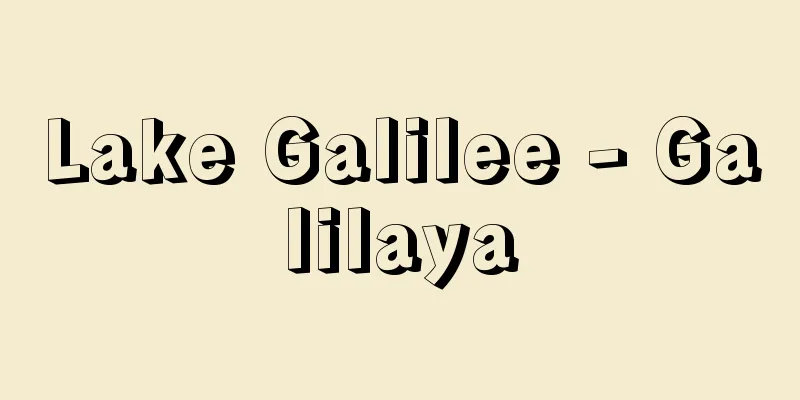Italian General Confederation of Labour - Confederazione Generale Italiana del Lavoro (English)

|
Abbreviated as CGIL (Chisil). Italy's largest trade union central organization (national center). It was founded in June 1944 when representatives of the Communist Party, the Socialist Party, and the Christian Democrats signed the "Pact of Rome" and agreed to form a unified General Confederation of Labor. With the start of the Cold War, cooperation between the parties collapsed, and CGIL's internal differences of opinion intensified under pressure from the United States on the one hand and the Vatican on the other. The direct trigger was the response to the protests against the attempted assassination of Communist Party Secretary General Togliatti in 1948, which led to the organization splitting up. First the Christian Democrats, followed by the Social Democrats and Republicans, the former forming the Italian Trade Union Confederation (CISL) and the latter the Italian Labour Confederation (UIL). Amid organizational divisions and the rapid growth of the Italian economy after World War II, the Confederation went through difficult times from the 1950s to the 1960s, including a decline in its membership. However, it has consistently maintained its position as the largest central labor union organization, with the basic goal of achieving full employment, advocating a "Labor Plan" aimed at reforming the entire national economy, and playing an active role in achieving improvements in wages and working conditions. Following the success of the general strike for pension system improvement from autumn 1968 to the following spring, the great struggle for the renewal of the labor agreement in autumn 1969 developed into a major social movement called "Hot Autumn" in which 20 million workers participated, and achieved important results in terms of social reform such as the realization of a 40-hour work week, pensions, housing, and southern development. This struggle also led to the creation of the "Workers' Charter," which provided for the protection of workers' rights and the guarantee of rights for union activities within companies. In 1972, based on the experience of these unified struggles, the three major central organizations of CGIL, CISL, and UIL formed a federation called Federazione, and regular unified actions were established under the three major demands of democratic change in economic policy, job security, and southern development, and exchanges between the three organizations are progressing. Since the mid-1980s, sharp labor-management conflicts have faded due to factors such as a decline in union membership, and in December 1998, just before the launch of the Economic and Monetary Union (EMU), a new social agreement was agreed upon by the government, the industrial federation, and each national center, aimed at reducing labor costs and increasing investment and employment. The CGIL has a cooperative relationship with the Democratic Party of the Left, the successor to the Italian Communist Party, but it is prohibited for union officials to hold positions as union officials and party officials at the same time. As of 2000, the number of affiliated unions and union members was 17, totaling approximately 4.56 million. The organizational strength of Italian national centers other than CGIL is as follows: CISL with 17 units and approximately 3.8 million members, and UIL with 35 units and approximately 1.54 million members. [Shigekazu Teshima] [References] | |Source: Shogakukan Encyclopedia Nipponica About Encyclopedia Nipponica Information | Legend |
|
略称CGIL(チジル)。イタリア最大の労働組合中央組織(ナショナル・センター)。1944年6月、共産党、社会党、キリスト教民主党の代表が「ローマ協定」を結び、統一的な労働総同盟の結成への合意が成立し創立された。冷戦の開始とともに、政党間の協調が崩れ、一方ではアメリカの、他方ではバチカンの圧力のもとでCGIL内部での意見対立が激しくなり、48年のトリアッティ共産党書記長暗殺未遂事件に対する抗議行動への対応を直接の契機として、組織分裂に至った。まずキリスト教民主党系が、続いて社会民主党系と共和党系が脱退し、前者はイタリア労働組合連盟(CISL(チズル))を、後者はイタリア労働連合(UIL(ウイル))を結成した。組織分裂と第二次世界大戦後のイタリア経済の高度成長のなかで、1950年代から60年代にかけて、総同盟は組織人員を減少させるなど困難な局面を経過したが、完全雇用実現を基本目標とし、国民経済全般にわたる改革を目ざす「労働プラン」を提唱し、賃金や労働条件の改善の実現に積極的な役割を果たすなど、一貫して最大の労働組合中央組織の地位を保ってきた。 1968年秋から翌年春にかけての年金制度改善のゼネストの成功に続いて、69年秋の労働協約更新の大闘争は、実際には2000万人の勤労者が参加する「熱い秋」といわれる一大社会運動として発展し、週40時間労働制を実現したのをはじめ、年金、住宅、南部開発などの社会的改革の面でも重要な成果を収めた。労働者の権利擁護や組合の企業内活動の権利保証を定めた「労働者憲章」もこの闘争が契機となり実現された。72年には、こうした統一闘争の経験から、CGIL、CISL、UILの三大中央組織間に連合体Federazioneがつくられ、経済政策の民主的転換、雇用の保障、南部開発の三大要求のもとで、恒常的な統一行動が定着し、3団体間の交流が前進している。 1980年代なかば以降、労働組合の組織率低下などの要因から、先鋭的な労使対立は影をひそめ、経済通貨同盟(EMU(エミュー))発足を前にした98年12月には、政府、産業連盟、各ナショナル・センターの政労使三者による労働コストの削減、投資、雇用増大を目ざした新たな社会協約が合意された。 CGILはイタリア共産党の後継政党である左翼民主党と協力関係にあるが、組合役員と政党役員の兼任は禁止されている。2000年現在の加盟組合および組合員数は、17単産、約456万人。 CGIL以外のイタリアのナショナル・センターの組織勢力は、CISLが17単産、約380万人、UILが35単産、約154万人となっている。 [手島繁一] [参照項目] | |出典 小学館 日本大百科全書(ニッポニカ)日本大百科全書(ニッポニカ)について 情報 | 凡例 |
<<: Italian Labour Confederation - Italian Labour Confederation
>>: Italian Workers' Union - Italian Workers' Union
Recommend
Gas oil
Diesel fuel. Source : Heibonsha Encyclopedia About...
Succinic anhydride (succinic anhydride)
A cyclic acid anhydride with a structure in which ...
Anderson, DD
...A site on a river terrace in the middle reache...
Crested Guinea Fowl - Crested Guinea Fowl
...The legs are strong and well developed. The fo...
Germination - Hatsuga
It refers to the resumption of growth of the seed...
Friday - Friday
Same as "Friday." Source: About Shogakuk...
Secret of economic management - Keisei Hisaku
This is one of the major works of Honda Toshiaki,...
Hiroshi Makimura
1912-1938 A poet from the early Showa period. Bor...
Angkor Dynasty - Angkor
Around 802 - 1432 The prosperous Khmer kingdom tha...
Momentum thrust - momentum thrust
…The output of a propulsion engine is expressed i...
Herreriano style (English spelling)
The style is named after Juan de Herrera (1530-97)...
Honjo Eijiro - Honjo Eijiro
Born: February 28, 1888 in Kyoto Died November 18,...
Ezo hare daisy - Ezo hare daisy
...The flower head is 4-5.5cm in diameter, with b...
Correctional Institution Act - Kyoseiinho
...However, public reformatory education also had...
Satan (English spelling)
It comes from the Hebrew word Sātān and means &quo...









